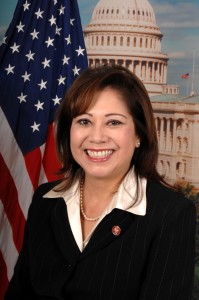
Unemployment Rate Steady at 9.1 Percent in August
Nonfarm payroll employment was unchanged in August, and the unemployment rate held at 9.1%, the US Bureau of Labor Statistics reported today. Employment in most major industries changed little over the month. Health care continued to add jobs, and a decline in information employment reflected a strike. Government employment continued to trend down, despite the return of workers from a partial government shutdown in Minnesota.
Household Survey Data
The number of unemployed persons, at 14.0 million, was essentially unchanged in August, and the unemployment rate held at 9.1%. The rate has shown little change since April.
Among the major worker groups, the unemployment rates for adult men (8.9%), adult women (8.0%), teenagers (25.4%), whites (8.0%), blacks (16.7%), and Hispanics (11.3%) showed little or no change in August. The jobless rate for Asians was 7.1%, not seasonally adjusted.
The number of long-term unemployed (those jobless for 27 weeks and over) was about unchanged at 6.0 million in August and accounted for 42.9% of the unemployed.
The labor force rose to 153.6 million in August. Both the civilian labor force participation rate, at 64.0%, and the employment-population ratio, at 58.2%, were little changed.
The number of persons employed part time for economic reasons (sometimes referred to as involuntary part-time workers) rose from 8.4 million to 8.8 million in August. These individuals were working part time because their hours had been cut back or because they were unable to find a full-time job.
About 2.6 million persons were marginally attached to the labor force in August, up from 2.4 million a year earlier. (The data are not seasonally adjusted.) These individuals were not in the labor force, wanted and were available for work, and had looked for a job sometime in the prior 12 months. They were not counted as unemployed because they had not searched for work in the 4 weeks preceding the survey.
Among the marginally attached, there were 977,000 discouraged workers in August, down by 133,000 from a year earlier. (The data are not seasonally adjusted.) Discouraged workers are persons not currently looking for work because they believe no jobs are available for them. The remaining 1.6 million persons marginally attached to the labor force in August had not searched for work in the 4 weeks preceding the survey for reasons such as school attendance or family responsibilities.
Establishment Survey Data
Total nonfarm payroll employment, at 131.1 million, was unchanged in August. Employment changed little in most major private-sector industries.
Health care employment rose by 30,000 in August. Ambulatory health care services and hospitals added 18,000 and 8,000 jobs, respectively. Over the past 12 months, health care employment has grown by 306,000.
Employment in mining continued to trend up in August (+6,000). Since reaching a trough in October 2009, employment in mining has risen by 144,000, with mining support activities accounting for most of the gain.
Within professional and business services, computer systems design and related services added 8,000 jobs in August. Employment in temporary help services changed little over the month (+5,000) and has shown little movement on net so far this year.
Employment in the information industry declined by 48,000 in August. About 45,000 workers in the telecommunications industry were on strike and thus off company payrolls during the survey reference period.
Manufacturing employment was essentially unchanged in August (-3,000), following a gain of 36,000 in July. For the past 4 months, manufacturing has added an average of 14,000 jobs per month, compared with an average of 35,000 jobs per month in the first 4 months of the year.
Elsewhere in the private sector, employment in construction; trade, transportation, and utilities; financial activities; and leisure and hospitality changed little over the month.
Government employment continued to trend down over the month (-17,000). Despite the return of about 22,000 workers from a partial government shutdown in Minnesota, employment in state government changed little in August (+5,000). Employment in local government continued to decline. Since employment peaked in September 2008, local government has lost 550,000 jobs.
The average workweek for all employees on private nonfarm payrolls edged down by 0.1 hour over the month to 34.2 hours. The manufacturing workweek was 40.3 hours for the third consecutive month; factory overtime increased by 0.1 hour over the month to 3.2 hours. The average workweek for production and nonsupervisory employees on private nonfarm payrolls edged down to 33.5 hours in August, after holding at 33.6 hours for the prior 6 months.
In August, average hourly earnings for all employees on private nonfarm payrolls decreased by 3 cents, or 0.1%, to $23.09. This decline followed an 11-cent gain in July. Over the past 12 months, average hourly earnings have increased by 1.9%. In August, average hourly earnings of private-sector production and nonsupervisory employees decreased by 2 cents, or 0.1%, to $19.47.
The change in total nonfarm payroll employment for June was revised from +46,000 to +20,000, and the change for July was revised from +117,000 to +85,000.










Vision Payroll